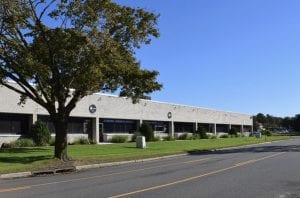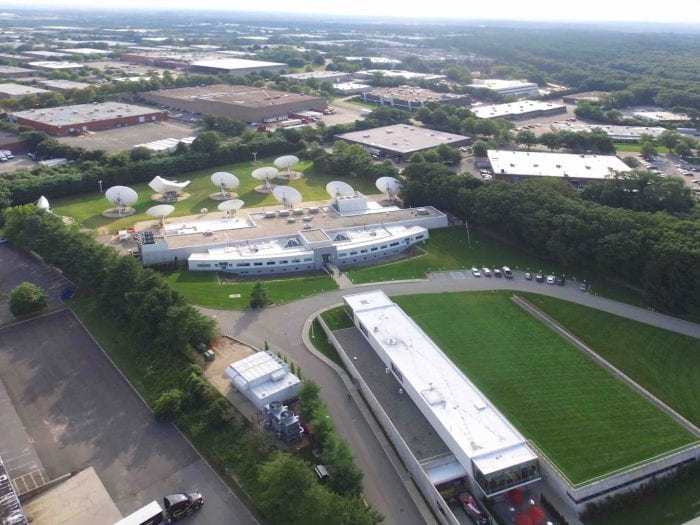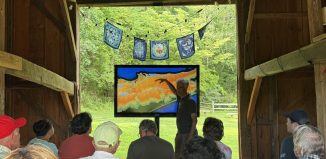Full Speed Ahead on Hauppauge’s New Innovation Park
Hauppauge’s new mixed-use complex will cater to young professionals working in and near the industrial park as businesses in the park evolve and change.

The Hauppauge Industrial Association of Long Island rebranded the former Hauppauge Industrial Park’s name to Long Island Innovation Park last year with plans to give it a modern facelift. It is not only the second largest industrial park in the country after Silicon Valley, but it also employs more than 55,000 people across Long Island.
Part of HIA-LI’s new vision was to add mixed-used developments to the area surrounding the park, with hopes to bring young, bright and career-driven people to work. The plan will blend housing and commercial real estate, making it an easy one-stop shop for college graduates to live, work and play all near their job.
Town of Smithtown spokeswoman Nicole Garguilo said plans for Long Island Innovation Park are heading toward a groundbreaking, but with no site planned construction as of yet. It will obviously take a few more years to be completely finalized.
But it has been a long process, beginning a little over three years ago, when James Lima Planning + Development strategists surveyed how the development could impact the area and economy. The proposal was published in 2019.
According to the report, the park already accounts for 8.2% of Long Island’s gross domestic product and houses 1,350 companies. The district encompasses about 1,400 acres of land and generates over $19 million in annual tax revenue for the town.
Garguilo said last month the overlay district was approved, which cites 13 potential properties that fit within those parameters.
“The buffer had to be 1,000 square feet between residential and commercial property,” she said. “It has to be far enough away from residential area, so we don’t interrupt the quality of life in the Hauppauge industrial zone.”
The overlay also must be on a vacant lot or property.
As the park has aged over the years, so have its occupying companies, Garguilo said.
“Commerce and economic trends have changed, leading to vacant properties, which was becoming visibly apparent when driving through the park,” she said.
So came the facelift.
“HIA in trying to reimagine what the park could be in the century we’re living in, came up with a master plan for the park to plan for the next 50 years,” Garguilo said. “Obviously industry has changed, you no longer have big warehouses, we’re seeing high tech, pharmaceutical, laboratories. … The park — if it’s going to survive and continue to produce the taxes to support the school districts — they need to evolve their park and what the parks going to look like.”
The report said the park supports the Hauppauge school district with approximately $44 million in annual tax revenue.
In building the mixed-use complex, it would “be able to attract the right high-end companies to the park,” she said, with many of the companies offering discounted housing as part of their benefits package.
“Sixty-eight percent of Long Islanders from 18 to 34 years of age planned to leave the region within the next five years,” Town of Smithtown Supervisor Ed Wehrheim (R) said at a press conference last month. “Smithtown is especially vulnerable to this exodus of young people, which would decimate the local economy, leaving behind an aging population incapable of filling local jobs.”
Garguilo said from the beginning, this project was nonpartisan, gaining support from politicians from both sides of the political spectrum.
“Everybody was instrumental in piecing it together from town, to the county and to the state with support from the Long Island Builders Association and Suffolk County IDA.”
However, some local residents claim it will cause more harm than good, saying it will cause an increase of traffic and an influx of new students to the district. “During the one opportunity the community had to voice their opinion, people were adamantly against it,” James Bouklas, president of the We Are Smithtown civic group, said. “The only ones supportive were the developers and politicians.”
Garguilo noted the study claims otherwise, mentioning that young people will stay in the same vicinity where everything they need is available.
“This vicinity is not impacting traffic,” she said. “[The Lima study] shows a slight uptick in traffic on weekends, but for the most part they want to be able do all of that and then walk home.”
She also said they are not expecting families to move into these workforce apartments, but rather use it as a stepping-stone for future homeownership.
“Statistically when a person moves to a town into an apartment or otherwise, when they’re ready to settle down they’re twice as more likely to stay in the town where they started their roots,” she said.







